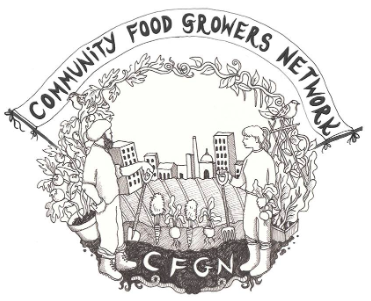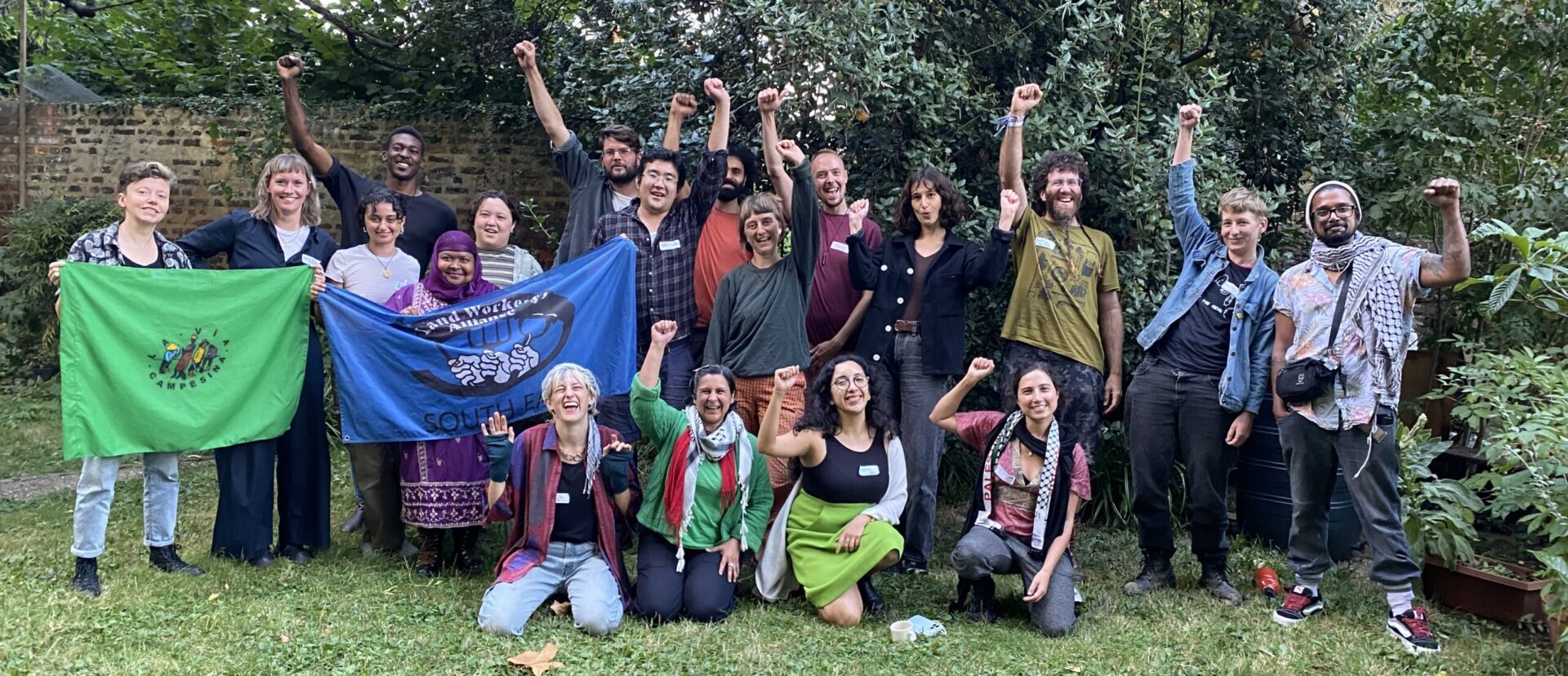Community Food Growing & Food Production policy recommendations for the London Plan – Draft February 2016
Just Space is developing proposals for what should be in the next London Plan – a vision and planning policies for London for the next 20 years. All the London Plans since the GLA was created in 2000 have been drafted by the Mayor and Londoners have only been able to comment, not initiate proposals. This time London’s community groups are insisting that they influence the formative stages: identifying London’s problems and needs and formulating policies. Just Space will be submitting a draft plan to the new Mayor during their first days in office in May 2016.
This time last year UCL students working with Just Space approached different organisations to research what policies should be in the ‘Food Production’ section of the draft plan. These included organisations such as the Community Food Growers Network, Capital Growth, Federation of City Farms and Gardens, Women’s Environmental Network, the London Permaculture group and Friends of the Earth.
After the Just Space Conference in July 2015 the Community Food Growers Network were approached to continue working on food production policy document. CFGN is a London-based support network of food projects putting land into community use to grow affordable, fresh, ecologically-produced food, and support others to do so.
With support from Capital Growth, Women’s Environmental Network, Federation for City Farms and Gardens and Just Space the latest draft is below.
Please e-mail cfgn@riseup.net if you have suggestions and amendments for the document.
COMMUNITY FOOD GROWING AND FOOD PRODUCTION POLICY & BRIEFING
Strategic
A. Land for food will support community food growing and food production enterprises. Scaling up the use of land for food will meet the longer term goal of achieving resilience (food security) and feeding the city. Food growing and production are closely related to housing, health, the economy and the environment and it is essential to adopt an approach that is intersectional as well as participatory and inclusive of all stakeholders. Food production provides employment and training and contributes to sustainable economic development.
B. Current community food growing spaces to be protected and supported in local plans. Use of land for growing food will be increased in all urban communities in both Inner and Outer London, via:
-
Partnership between the GLA, Sustain and established food production enterprises to identify food production sites on GLA-owned land for new entrants in the sector looking at cases of best practice between boroughs and food growing sites for examples of successful economic and social models
-
Career long agricultural tenureships offered by boroughs and GLA for food production sites, so that enough time is provided to develop financial viability, benefits of bio-diversity, soil replenishment and community development.
-
Integration of food growing space as a requirement in all new housing developments and utilisation of green roof methods- with potential for trainings and enterprise opportunities where appropriate
C. Boroughs to foster a new generation of London food producers to work in a globally innovative urban food system by funding and supporting:
-
accredited training in organic food production
-
paid work placements – apprenticeships and shorter-term placements (e.g. 6 months) that support (young) people to further develop skills in the work environment and provide sustainable employment opportunities
-
associated “next steps” training – e.g. enterprise training, community development training
D. The Mayor will promote and enhance the London Food Strategy and ensure its implementation through the London Food Board, which will include representatives from the London local food production and community food growing sector.
LDF Preparations
A. GLA and borough councils to integrate food production into different funding streams and new developments in recognition of the various benefits of the sector and positive land use activity including; access to green space, mental health, enteprise generation, training, personal development, community well-being, access to fresh and healthy food, reduction of carbon footprint in food industry
B. Boroughs should identify and safeguard land for commercial food production and community gardening, including allotments, parks, and orchards. Boroughs to maintain a public list of available plots and to administer a land register of interested parties looking for land for production and marketing of food for London.
Public land that is underused or vacant should be prioritised for food growing and food production, either temporarily (meanwhile use) or on a longer term basis under the Community Right to Reclaim Land, (Localism Act 2011).
C. Food production enterprises and community gardens to partner boroughs in local forums to implement the ‘London Food Strategy’ (2006), ‘Cultivating the Capital’ (2010) and the ‘Milan Urban Food Policy Pact’ (2015)
D. Agriculture land uses should be prioritised in Urban Fringe & Green Belt areas. Boroughs in the urban fringe of London to provide land through National Planning Policy Guidance for development of farm enteprises and farm-to-table housing communities
E. Boroughs support food producers by investment through Section 106 and the Community Infrastructure Levy., specifically to support food growing activities to take place in lands held or acquired by private bodies for ‘development’. Examples include the establishment of mini-allotments in housing estates, Community Asset Transfer, and rent reduction for initial set period
F. GLA and boroughs to independently purchase at least 15% of their total supply of foodstuffs from small-scale, non-chemical producers located in and around London by 2020, 25% by 2030 and 30% by 2036- to increase demand for short supply chain and build sustainable local economies
Planning decisions
A. Development that increases or enhances land for food production for community use will be supported. Consideration should be given to growing space that will be suitable for communities needs, water requirements, grey-water recycling for irrigation, considering sunlight and access needs. Growing space could be part of the soft landscaping strategy or part of the green space provision, or use more innovative solutions such as roof gardens.
MILAN URBAN FOOD POLICY PACT 2015i
The Mayor of London has signed up to the Milan Urban Policy Pact. This proposes developing a sustainable food system for cities which means:
a) re-examining the ways in which cities are provisioned with food and water
b) recognising the role of smallholder food producers in feeding cities sustainably
c) acknowledging that urban and peri-urban agriculture can play a role in protecting and integrating biodiversity into city region landscape and food systems.
d) adopting a comprehensive, inter-disciplinary and inter-institutional approach because food policies are closely related to many other challenges and policies such as poverty, health and social protection, hygiene and sanitation, land use planning, transport, energy, education and disaster preparedness.
f) address climate change and environmental degradation derived from unsustainable food production
Milan Urban Food Policy Pact recommended actions
Food Production
-
Strengthen urban and peri-urban food production, processing and distribution based on sustainable approaches, focusing on smallholder producers.
-
Apply an ecosystem approach to guide holistic and integrated land use planning and management, for example with risk-minimizing strategies to enhance opportunities for agro-ecological production, conservation and biodiversity and farmland, climate change adaptation, tourism, leisure and other ecosystem services.
-
Protect and enable secure access and tenure to land for sustainable food production in urban and peri-urban areas, for example through land banks, community land trust but also through sufficiently long lease agreements, which are crucial in order for the farmers to establish soil fertility and get the business going.
-
Help provide services to food producers including technical training, financial assistance and inputs such as compost from food waste, grey-water from post-consumer use and energy from waste. The vicinity to the city should and could make these inputs a reality for urban and peri-urban food producers.
-
Support short food chains, producers organisations, producer-to-consumer network and platforms, and other market systems that integrate the social and economic infrastructure of urban food system that links urban and rural areas.
Food supply and distribution
-
Eliminate barriers to market access for smallholder producers and implement local food safety legislation and regulations.
-
Provide policy and programme support for municipal public markets including farmers market, informal markets, retail and wholesale markets, restaurants, and other food distributors.
-
Support improved food storage, processing, transport and distribution technologies and infrastructure linking peri-urban and near rural areas to ensure seasonal food consumption and reduce food insecurity as well as food and nutrient loss and waste with an emphasis on diversified small and medium scale food businesses along the value chain that may provide decent and stable employment.
-
Review public procurement and trade policy aimed at facilitating food supply from short chains linking cities to secure a supply of healthy food, while also facilitating job access, fair production conditions and sustainable production for the most vulnerable producers and consumers, thereby using the potential of public procurement to help realize the right to food for all.
-
Develop or revise urban food policies and plans and ensure allocation of appropriate resources within city administration regarding food-related policies and programmes; review, harmonize and strengthen municipal regulations; build up strategic capacities for a more sustainable, healthy and equitable food system balancing urban and rural interests.
-
Develop or improve multi-sectoral information systems for policy development and accountability by enhancing the availability, quality, quantity, coverage and management and exchange of data related to urban food systems, including both formal data collection and data generated by civil society and other partners.
Sustainable diets and nutrition
-
Promote sustainable diets (healthy, safe, culturally appropriate, environmentally friendly and rights based) through relevant education, health promotion and communication programmes, with special attention to schools, care centres, markets and the media.
-
Address non-communicable diseases associated with poor diets and obesity, giving specific attention where appropriate to reducing intake of sugar, salt, meat and dairy products and increasing consumption of fruits and vegetables and non-processed foods.
Social and economic equity
-
Use cash and food transfers, and other forms of social protection systems (food banks, community food kitchens, emergency food pantries etc.) to provide vulnerable populations with access to healthy food, while taking into consideration the specific beliefs, culture, traditions, dietary habits and preferences of diverse communities, as a matter of human dignity and to avoid further marginalization.
-
Reorient school feeding programmes and other institutional food service to provide food that is healthy, local and regionally sourced, seasonal and sustainably produced.
-
Promote decent employment for all, including fair economic relations, fair wages and improved labour conditions within the food and agriculture sector, with the full inclusion of women.
-
Promote networks and support grassroots activities (such as community gardens, community food kitchens, social pantries, etc.) that create social inclusion and provide food to marginalized individuals.
Food Waste
-
Convene food system actors to assess and monitor food loss and waste reduction at all stages of the city region food supply chain, (including production, processing, packaging, safe food preparation, presentation and handling, re-use and recycling) and ensure holistic planning and design, transparency, accountability and policy integration.
-
Raise awareness of food loss and waste through targeted events and campaigns; identify focal points such as educational institutions, community markets, company shops and other solidarity or circular economy initiatives.
-
Collaborate with the private sector along with research, educational and community-based organisations to develop and review, as appropriate, municipal policies and regulations (e.g. processes, cosmetic and grading standards, expiration dates, etc.) to prevent waste or safely recover food and packaging using a “food use-not-waste” hierarchy.
THE POTENTIAL OF LONDON GREEN BELT FOR FOOD PRODUCTION
Key Facts on London Green Belt land
CPRE: Green Belts A Greener Future 2010 The London (Metropolitan) Green Belt Fact Sheet See Sections on Agriculture, Public Aspirations and Food
-
Only 57% of LondonGreen Belt land is currently in agricultural use and there is a high prevalence of ‘semi-urban’ uses relying on open land, such as catteries, golf courses and pony paddocks.
-
The Metropolitan Green Belt has a significant proportion (5,380 ha) of farmland covered by Higher Level Stewardship schemes, but a low overall proportion (51% of all land in agricultural use) of involvement in Natural England funding supporting environmentally sensitive farming (‘agri-environment schemes’; the national proportion is 67%; Green Belt land overall 53%).
-
14% of London Green Belt is Grade 1 or Grade 2, i.e. the ‘best and most versatile’ agricultural land.
-
Asked if they would buy food known to have been grown or produced by farmers in the Green Belt local to them rather than buy food produced elsewhere, the following percentages of respondents in the three regions covered by London’s Green Belt agreed:
66%- London
88%- South East
85%- East of England
Agriculture land uses should be prioritised in Urban fringe and Green Belt areas
Agriculture is one of the few land uses permitted in the Green Belt but in relation to the other uses, it is often given a lower priority by Local Planning Authorities when formulating borough policies and making planning decisions. The National Policy Guidance PPG2 (Green Belt) should be incorporated in the local plans, and boroughs should indicate if there is potential for agricultural uses and where. There has been so far scarce implementation of national and regional policy and this is partly due to other development pressures hindering farming particularly in the Green Belt. Increasing pressure from ‘land baking’ is one of the factors that contributed to the decline of the amount of land devoted to food growing since the 1950s in London. According to the Cultivating the Capital (2010) report, up to 15% of Greater London’s land area is farmland, but less than 10% of land in Greater London appears to be actively farmed. Other factors impeding the development of urban food growing in London are: low farm gate prices; the high cost of labour and transport; a shortage of skills, grants and funding scheme. The latter are often not applicable to small-scale farming businesses.
In order to support and encourage agriculture land use in the Green Belt, the London Plan should specifically state that food growing is one of the most beneficial land uses in the Green Belt and should also include a requirement for boroughs to support food growing as one of the most productive activities in the Green Belt when preparing their Local Development Frameworks.
London Assembly Cultivating the Capital , Food Growing and Planning in London, 2010
The city of Almere (Netherlands)
An example that demonstrate how urban agriculture can become a driver for regeneration
The Dutch University in Wageningen designed a virtual rural-urban city district called “Agromere”. In this virtual district, agriculture and urban living merge with each other taking into account the need of all parties involved. This project inspired the city of Almere to implement UA in its development plans. The draft structural vision “Almere 2.0”ii allocates land for 15000 new homes with urban agriculture as a main element of the green infrastructure to the east of Almere.
iMilan Urban Food Policy Pact 2015. http://www.foodpolicymilano.org/wp-content/uploads/2015/10/Milan-Urban-Food-Policy-Pact-EN.pdf
iiDraft structural vision “Almere 2.0” https://english.almere.nl/fileadmin/files/almere/subsites/english/Draft_strategic_vision_Almere_2.0.pdf – Accessed on 26 January 2016.


